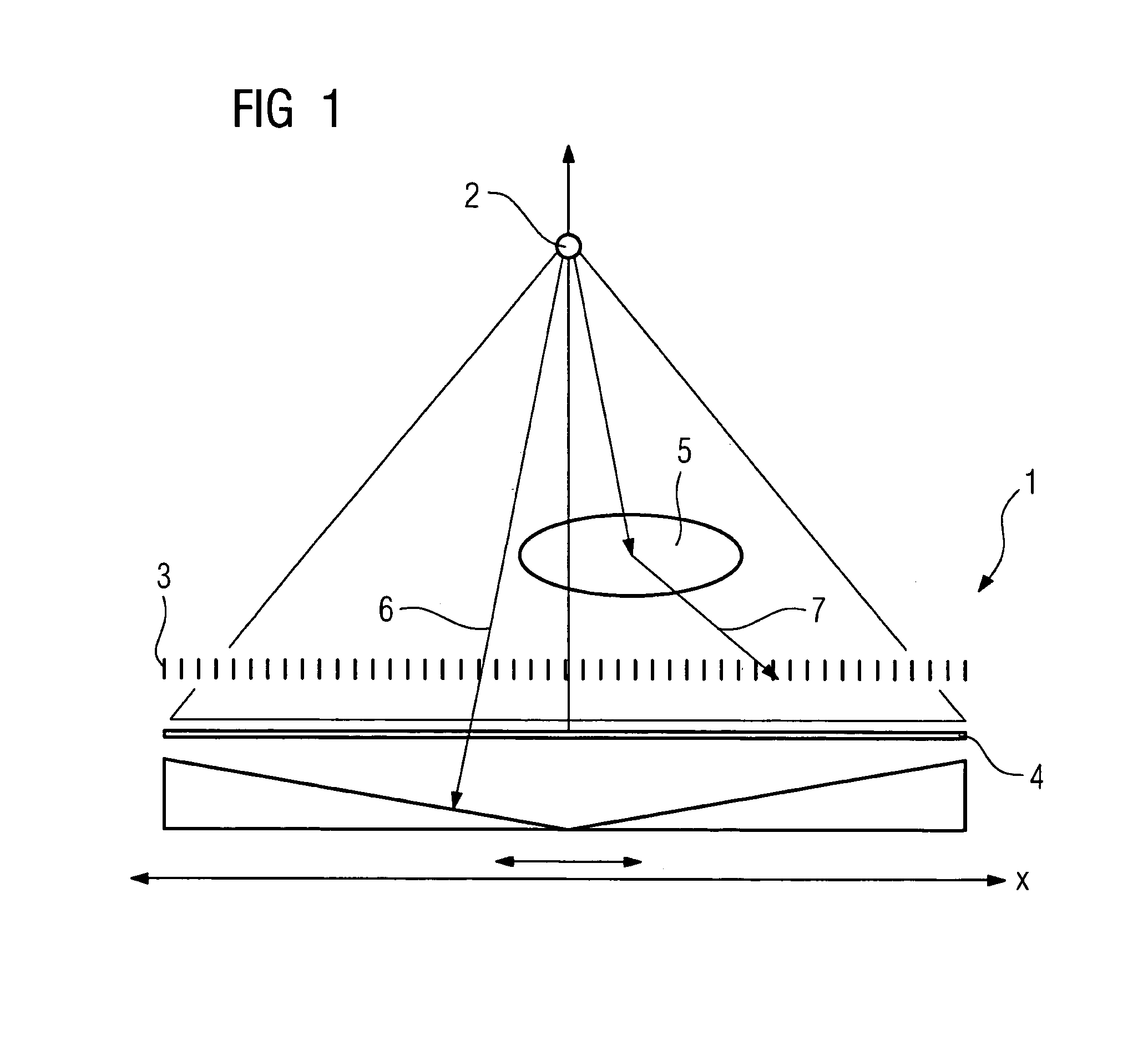Method of compensating for image faults in an x-ray image recording
a technology of image faults and image recording, applied in the field of compensating for image faults in x-ray image recording, can solve the problems of reducing intensity, affecting the image, and affecting the image itsel
- Summary
- Abstract
- Description
- Claims
- Application Information
AI Technical Summary
Benefits of technology
Problems solved by technology
Method used
Image
Examples
Embodiment Construction
[0023]The x-ray system 1 shown in FIG. 1 consists of a schematic diagram of an x-ray tube 2, an anti-scatter grid 3 and an image detector 4 arranged below the anti-scatter grid. On illumination of an object 5, which is located between the x-ray tube 2 and the anti-scatter grid 3, direct information-bearing primary radiation 6 passes through the object 5 to reach the detector 4. A part of the radiation however is deflected by inhomogeneities, for example bones, in the object and thus becomes scattered radiation which disturbs the image. This is subsequently blocked off by the lead laminations of the anti-scatter grid 3. In this way scattered radiation 7 which disturbs the image is prevented from reaching the detector 4.
[0024]With the x-ray system 1 the x-ray tube 2 is adjustable vertically so that different distances between the x-ray tube 2 and the detector 4 can be set. Since the individual lead strips from which the anti-scatter grid is constructed are inclined at a slight angle, ...
PUM
| Property | Measurement | Unit |
|---|---|---|
| focal length | aaaaa | aaaaa |
| distances | aaaaa | aaaaa |
| image brightness | aaaaa | aaaaa |
Abstract
Description
Claims
Application Information
 Login to View More
Login to View More - R&D
- Intellectual Property
- Life Sciences
- Materials
- Tech Scout
- Unparalleled Data Quality
- Higher Quality Content
- 60% Fewer Hallucinations
Browse by: Latest US Patents, China's latest patents, Technical Efficacy Thesaurus, Application Domain, Technology Topic, Popular Technical Reports.
© 2025 PatSnap. All rights reserved.Legal|Privacy policy|Modern Slavery Act Transparency Statement|Sitemap|About US| Contact US: help@patsnap.com



